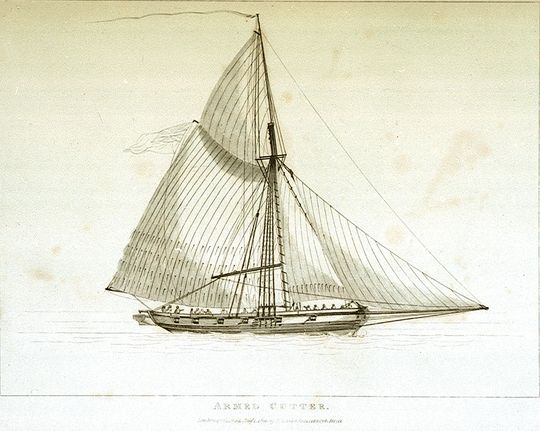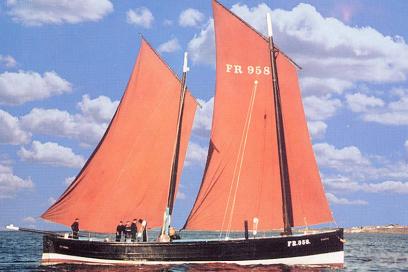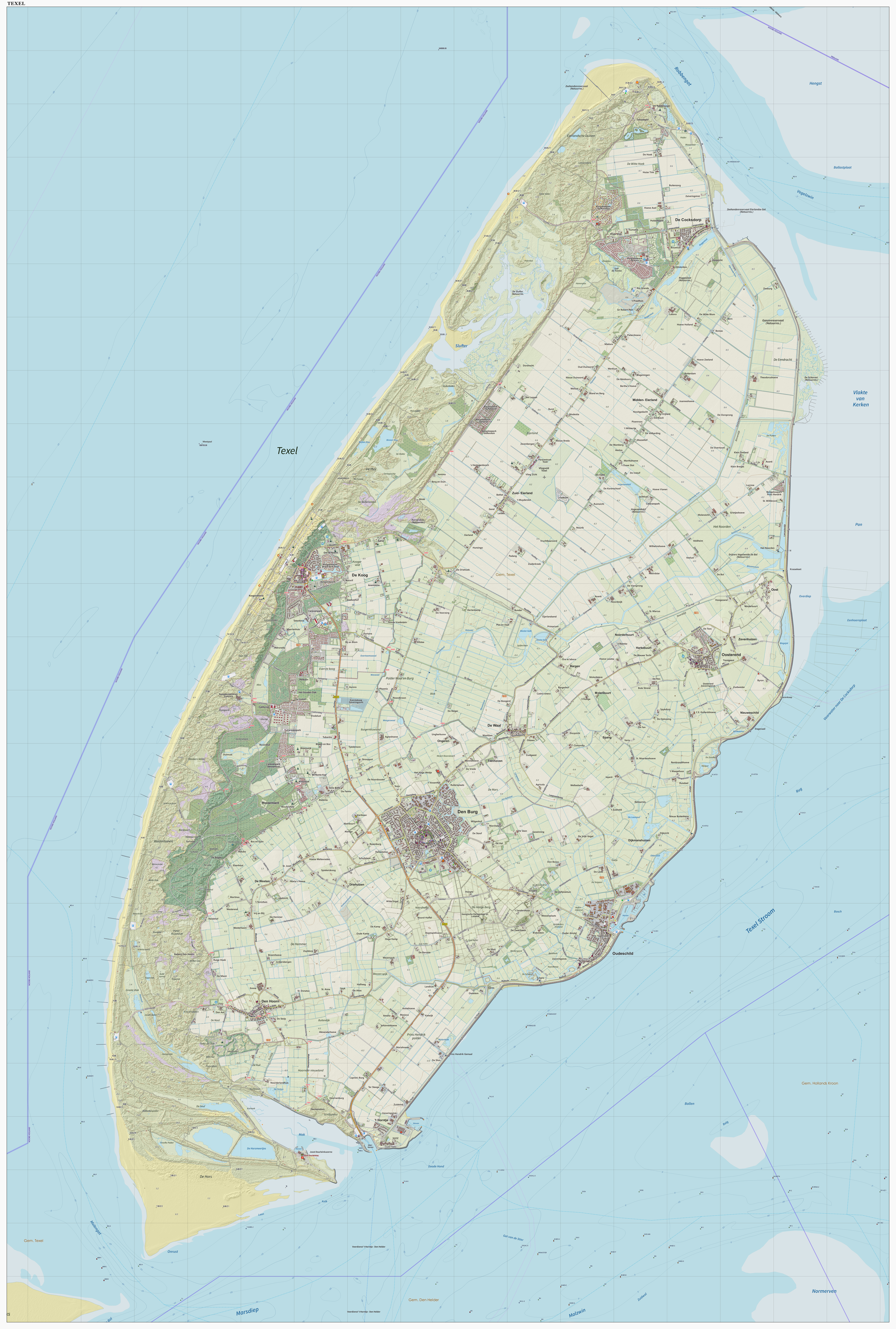|
Agnes (1804)
His Majesty's hired armed lugger ''Venus'', which was renamed ''Agnes'' in 1804, served the British Royal Navy from 8 March 1804 until she foundered in the Texel in March 1806. She was of 66 tons ( bm), and her armament consisted of six 12-pounder carronades. She had a crew of 23 men."Answers" (1911) ''Mariner's Mirror''. Vol. 1, №6, pp.187-8. She served on a contract from 26 April March 1804 to 25 October 1806, during which time the Admiralty paid £2017 12 s per year for her hire. On 11 November 1804 , together with , , , , , , , and the hired armed cutters ''Swift'' and ''Agnes'' shared in the capture of ''Upstalsboom'', H.L. De Haase, master. Around early March 1806 ''Agnes'' sent into Yarmouth ''Amelia Sophia'', Kahler, master, which had been sailing from Amsterdam to Bordeaux.''Lloyd's List'4 March 1806, №4302./ref> ''Agnes'' was under the command of Lieutenant William Morgan when she foundered off the Texel Texel (; Texels dialect: ) is a municipality and ... [...More Info...] [...Related Items...] OR: [Wikipedia] [Google] [Baidu] |
Hired Armed Vessels
During the eighteenth and nineteenth centuries the Royal Navy made use of a considerable number of hired armed vessels. These were generally smaller vessels, often cutters and luggers, that the Navy used for duties ranging from carrying and passengers to convoy escort, particularly in British coastal waters, and reconnaissance.Winfield (2008), p.387. Doctrine The Navy Board usually hired the vessel complete with master and crew rather than bareboat. Contracts were for a specified time or on an open-ended monthly hire basis. During periods of peace, such as the period between the Treaty of Amiens and the commencement of the Napoleonic Wars, the Admiralty returned the vessels to their owners, only to rehire many on the outbreak of war. The Admiralty provided a regular naval officer, usually a lieutenant for the small vessels, to be the commander. The civilian master then served as the sailing master. For purposes of prize money or salvage, hired armed vessels received the same ... [...More Info...] [...Related Items...] OR: [Wikipedia] [Google] [Baidu] |
Lugger
A lugger is a sailing vessel defined by its rig, using the lug sail on all of its one or several masts. They were widely used as working craft, particularly off the coasts of France, England, Ireland and Scotland. Luggers varied extensively in size and design. Many were undecked, open boats, some of which operated from beach landings (such as Hastings or Deal). Others were fully decked craft (typified by the Zulu and many other sailing drifters). Some larger examples might carry lug topsails. Luggers were used extensively for smuggling from the middle of the 18th century onwards; their fast hulls and powerful rigs regularly allowed them to outpace any Revenue vessel in service. The French three-masted luggers also served as privateers and in general trade. As smuggling declined about 1840, the mainmast of British three-masted luggers tended to be discarded, with larger sails being set on the fore and mizzen. This gave more clear space in which to work fishing nets. Local ... [...More Info...] [...Related Items...] OR: [Wikipedia] [Google] [Baidu] |
Royal Navy
The Royal Navy (RN) is the United Kingdom's naval warfare force. Although warships were used by English and Scottish kings from the early medieval period, the first major maritime engagements were fought in the Hundred Years' War against France. The modern Royal Navy traces its origins to the early 16th century; the oldest of the UK's armed services, it is consequently known as the Senior Service. From the middle decades of the 17th century, and through the 18th century, the Royal Navy vied with the Dutch Navy and later with the French Navy for maritime supremacy. From the mid 18th century, it was the world's most powerful navy until the Second World War. The Royal Navy played a key part in establishing and defending the British Empire, and four Imperial fortress colonies and a string of imperial bases and coaling stations secured the Royal Navy's ability to assert naval superiority globally. Owing to this historical prominence, it is common, even among non-Britons, to ref ... [...More Info...] [...Related Items...] OR: [Wikipedia] [Google] [Baidu] |
Builder's Old Measurement
Builder's Old Measurement (BOM, bm, OM, and o.m.) is the method used in England from approximately 1650 to 1849 for calculating the cargo capacity of a ship. It is a volumetric measurement of cubic capacity. It estimated the tonnage of a ship based on length and maximum beam (nautical), beam. It is expressed in "tons burden" ( en-em , burthen , enm , byrthen ), and abbreviated "tons bm". The formula is: : \text = \frac where: * ''Length'' is the length, in foot (length), feet, from the stem (ship), stem to the sternpost; * ''Beam (nautical), Beam'' is the maximum beam, in feet. The Builder's Old Measurement formula remained in effect until the advent of steam propulsion. Steamships required a different method of estimating tonnage, because the ratio of length to beam was larger and a significant volume of internal space was used for boilers and machinery. In 1849, the Moorsom System was created in the United Kingdom. The Moorsom system calculates the cargo-carrying capaci ... [...More Info...] [...Related Items...] OR: [Wikipedia] [Google] [Baidu] |
Carronade
A carronade is a short, smoothbore, cast-iron cannon which was used by the Royal Navy. It was first produced by the Carron Company, an ironworks in Falkirk, Scotland, and was used from the mid-18th century to the mid-19th century. Its main function was to serve as a powerful, short-range, anti-ship and anti-crew weapon. The technology behind the carronade was greater dimensional precision, with the shot fitting more closely in the barrel thus transmitting more of the propellant charge's energy to the projectile, allowing a lighter gun using less gunpowder to be effective. Carronades were initially found to be very successful, but they eventually disappeared as naval artillery advanced, with the introduction of rifling and consequent change in the shape of the projectile, exploding shells replacing solid shot, and naval engagements being fought at longer ranges. History The carronade was designed as a short-range naval weapon with a low muzzle velocity for merchant ships, b ... [...More Info...] [...Related Items...] OR: [Wikipedia] [Google] [Baidu] |
£sd
£sd (occasionally written Lsd, spoken as "pounds, shillings and pence" or pronounced ) is the popular name for the pre-decimal currencies once common throughout Europe, especially in the British Isles and hence in several countries of the British Empire and subsequently the Commonwealth. The abbreviation originates from the Latin currency denominations '' librae'', ''solidi'', and ''denarii''. In the United Kingdom, these were referred to as '' pounds'', ''shillings'', and '' pence'' (''pence'' being the plural of ''penny''). Although the names originated from popular coins in the classical Roman Empire, their definitions and the ratios between them were introduced and imposed across Western Europe by the Emperor Charlemagne. The £sd system was the standard across much of the European continent (France, Italy, Germany, etc.) for nearly a thousand years, until the decimalisations of the 18th and 19th centuries. As the United Kingdom remained one of the few countries reta ... [...More Info...] [...Related Items...] OR: [Wikipedia] [Google] [Baidu] |
Shilling
The shilling is a historical coin, and the name of a unit of modern currencies formerly used in the United Kingdom, Australia, New Zealand, other British Commonwealth countries and Ireland, where they were generally equivalent to 12 pence or one-twentieth of a pound before being phased out during the 20th century. Currently the shilling is used as a currency in five east African countries: Kenya, Tanzania, Uganda, Somalia, as well as the ''de facto'' country of Somaliland. The East African Community additionally plans to introduce an East African shilling. History The word ''shilling'' comes from Old English "Scilling", a monetary term meaning twentieth of a pound, from the Proto-Germanic root skiljaną meaning 'to separate, split, divide', from (s)kelH- meaning 'to cut, split.' The word "Scilling" is mentioned in the earliest recorded Germanic law codes, those of Æthelberht of Kent. There is evidence that it may alternatively be an early borrowing of Phoenician ... [...More Info...] [...Related Items...] OR: [Wikipedia] [Google] [Baidu] |
Lloyd's List
''Lloyd's List'' is one of the world's oldest continuously running journals, having provided weekly shipping news in London as early as 1734. It was published daily until 2013 (when the final print issue, number 60,850, was published), and is in constantly updated digital format only since then. Also known simply as ''The List'', it was begun by Edward Lloyd, the proprietor of Lloyd's Coffee House, as a reliable and concise source of information for the merchants' agents and insurance underwriters who met regularly in his establishment in Lombard Street, London, Lombard Street to negotiate insurance coverage for trading vessels. The digital version, updated hour-to-hour and used internationally, continues to fulfil a similar purpose. Today it covers information, analysis and knowledge relevant to the shipping industry, including marine insurance, offshore energy, logistics, market data, research, global trade and law, in addition to shipping news. History Predecessor publicati ... [...More Info...] [...Related Items...] OR: [Wikipedia] [Google] [Baidu] |
Texel
Texel (; Texels dialect: ) is a municipality and an island with a population of 13,643 in North Holland, Netherlands. It is the largest and most populated island of the West Frisian Islands in the Wadden Sea. The island is situated north of Den Helder, northeast of Noorderhaaks, and southwest of Vlieland. Name The name ''Texel'' is Frisian, but because of historical sound-changes in Dutch, where all -x- sounds have been replaced with -s- sounds (compare for instance English ''fox'', Frisian ''fokse'', German ''Fuchs'' with Dutch ''vos''), the name is typically pronounced ''Tessel'' in Dutch. History The All Saints' Flood (1170) created the islands of Texel and Wieringen from North Holland. In the 13th century Ada, Countess of Holland was held prisoner on Texel by her uncle, William I, Count of Holland. Texel received city rights in 1415. The first Dutch expedition to the Northwest Passage departed from the island on the 5th of June, 1594. Texel was involved in the Battl ... [...More Info...] [...Related Items...] OR: [Wikipedia] [Google] [Baidu] |
Hired Armed Vessels Of The Royal Navy
Henry Jamison "Jam" Handy (March 6, 1886 – November 13, 1983) was an American Olympic breaststroke swimmer, water polo player, and founder of the Jam Handy Organization (JHO), a producer of commercially sponsored motion pictures, slidefilms (later known as filmstrips), trade shows, industrial theater and multimedia training aids. Credited as the first person to imagine distance learning, Handy made his first film in 1910 and presided over a company that produced an estimated 7,000 motion pictures and perhaps as many as 100,000 slidefilms before it was dissolved in 1983. Athletic activities As a swimmer, Handy introduced a number of new swimming strokes to Americans, such as the Australian crawl. He would often wake up early and devise new strokes to give him an edge over other swimmers. Swimming led to him getting a bronze in the 1904 Olympics at St. Louis, Missouri. Twenty years later he was part of the Illinois Athletic Club water polo team at the 1924 Olympics in Paris, F ... [...More Info...] [...Related Items...] OR: [Wikipedia] [Google] [Baidu] |
Maritime Incidents In 1806
Maritime may refer to: Geography * Maritime Alps, a mountain range in the southwestern part of the Alps * Maritime Region, a region in Togo * Maritime Southeast Asia * The Maritimes, the Canadian provinces of Nova Scotia, New Brunswick, and Prince Edward Island * Maritime County, former county of Poland, existing from 1927 to 1939, and from 1945 to 1951 * Neustadt District, Reichsgau Danzig-West Prussia, known from 1939 to 1942 as ''Maritime District'', a former district of Reichsgau Danzig-West Prussia, Nazi Germany, from 1939 to 1945 * The Maritime Republics, thalassocratic city-states on the Italian peninsula during the Middle Ages Museums * Maritime Museum (Belize) * Maritime Museum (Macau), China * Maritime Museum (Malaysia) * Maritime Museum (Stockholm), Sweden Music * ''Maritime'' (album), a 2005 album by Minotaur Shock * Maritime (band), an American indie pop group * "The Maritimes" (song), a song on the 2005 album ''Boy-Cott-In the Industry'' by Classified * "Maritime" ... [...More Info...] [...Related Items...] OR: [Wikipedia] [Google] [Baidu] |
Shipwrecks Of The Netherlands
A shipwreck is the wreckage of a ship that is located either beached on land or sunken to the bottom of a body of water. Shipwrecking may be intentional or unintentional. Angela Croome reported in January 1999 that there were approximately three million shipwrecks worldwide (an estimate rapidly endorsed by UNESCO and other organizations). When a ship's crew has died or abandoned the ship, and the ship has remained adrift but unsunk, they are instead referred to as ghost ships. Types Historic wrecks are attractive to maritime archaeologists because they preserve historical information: for example, studying the wreck of revealed information about seafaring, warfare, and life in the 16th century. Military wrecks, caused by a skirmish at sea, are studied to find details about the historic event; they reveal much about the battle that occurred. Discoveries of treasure ships, often from the period of European colonisation, which sank in remote locations leaving few livin ... [...More Info...] [...Related Items...] OR: [Wikipedia] [Google] [Baidu] |





.png)
